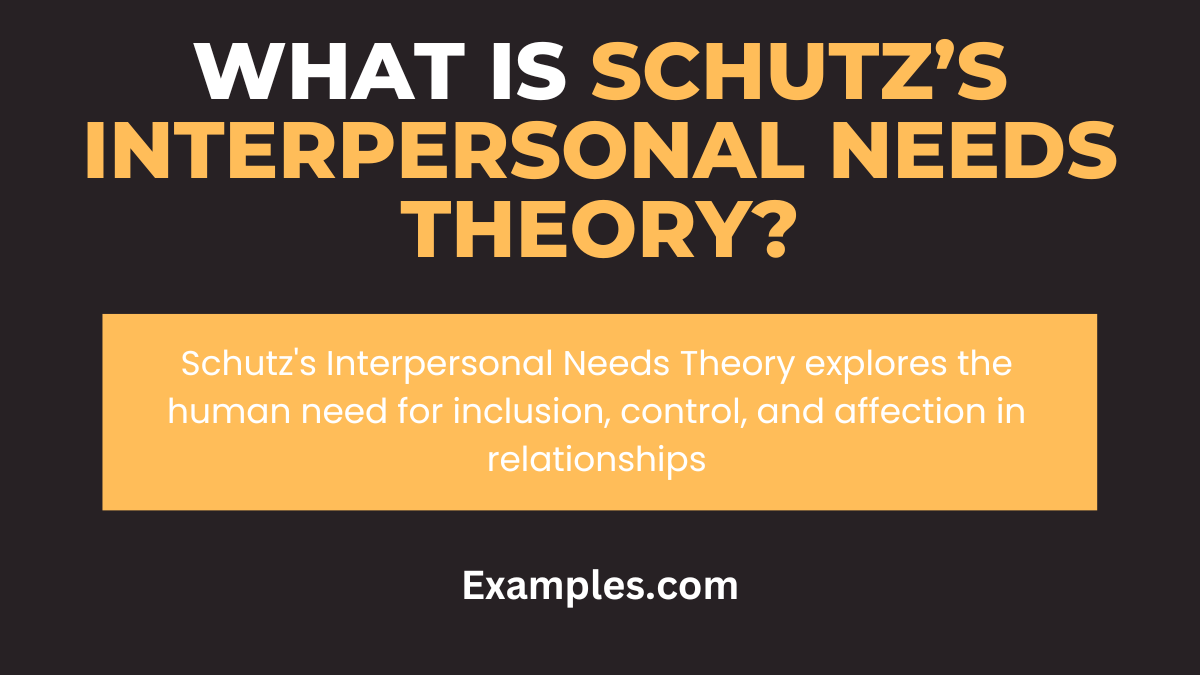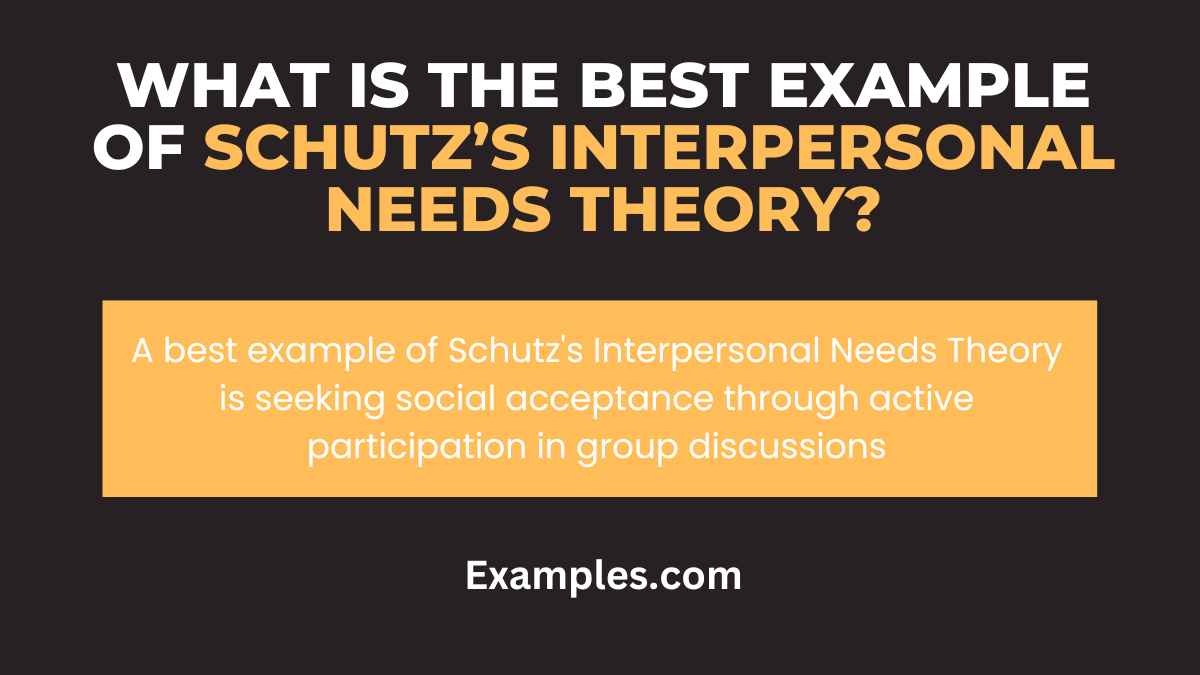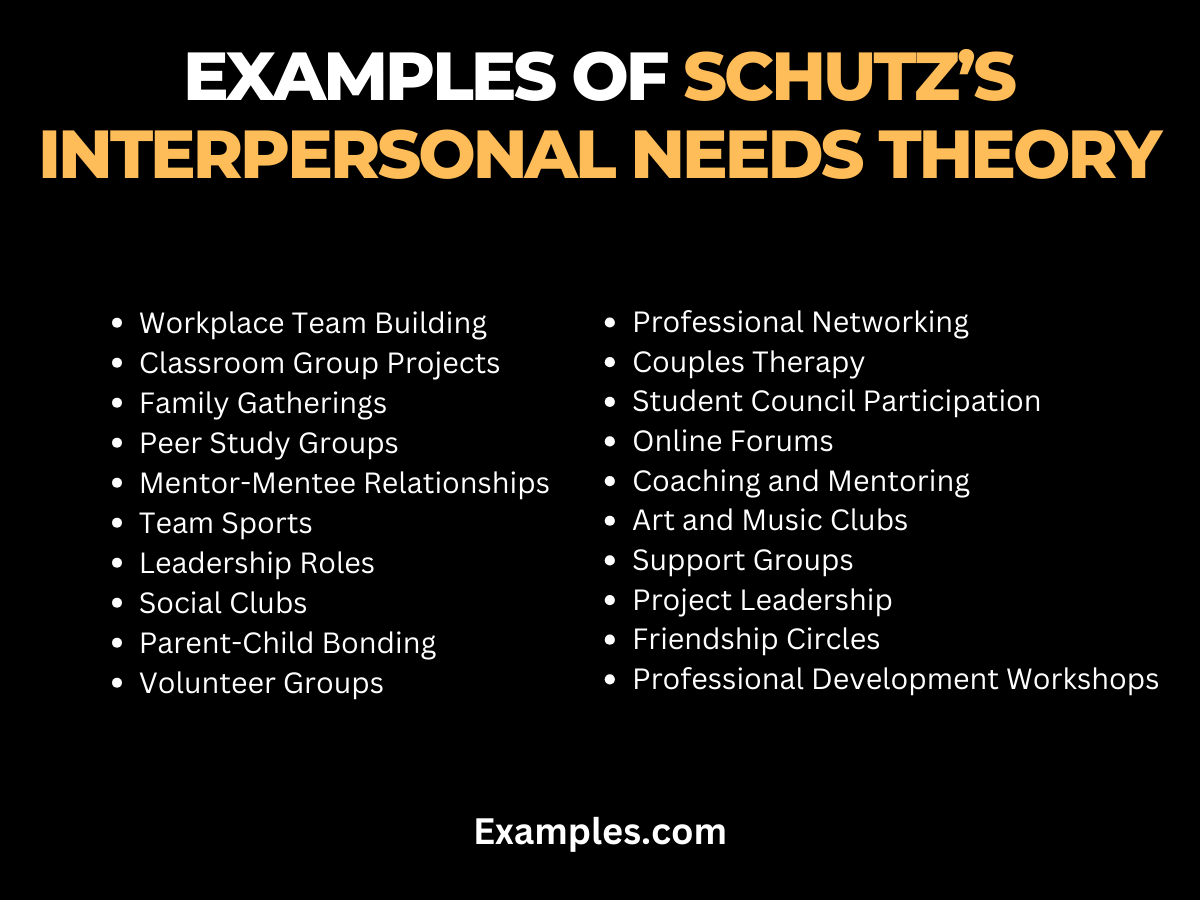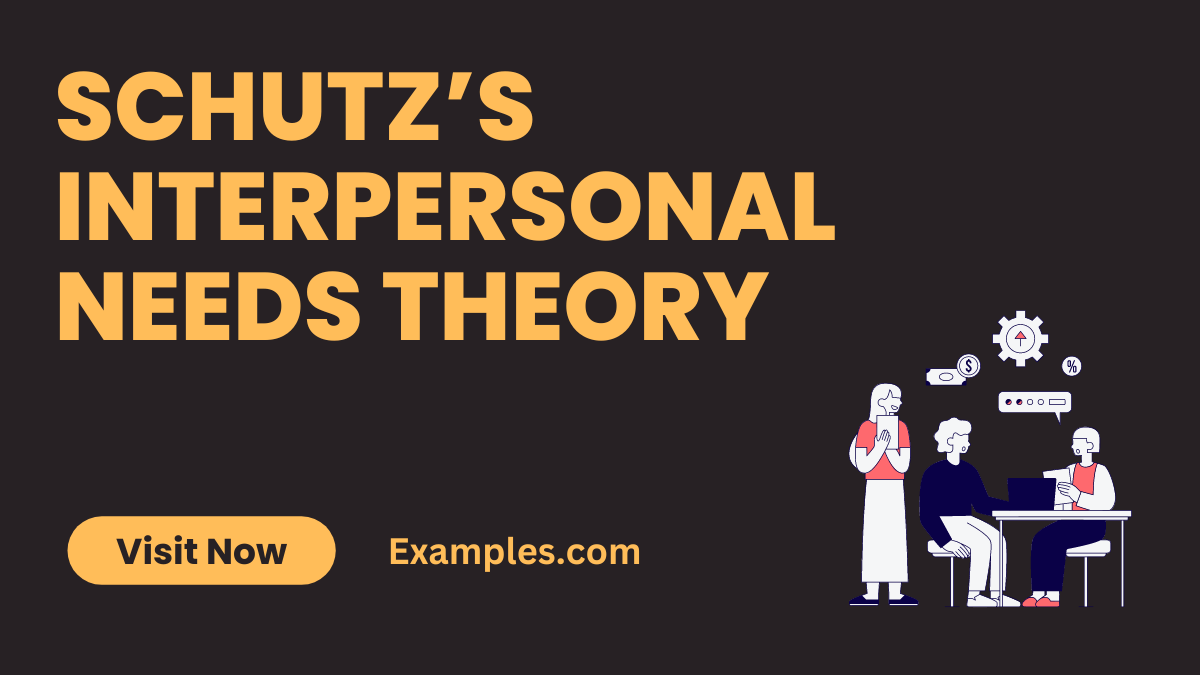Schutz’s Interpersonal Needs Theory
Schutz’s Interpersonal Needs Theory offers a fascinating exploration into the complexities of human communication. This theory, rooted in the understanding of individual needs within social interactions, serves as a vital tool for deciphering the intricate dance of human relationships. It dives deep into the three fundamental needs: inclusion, control, and affection, each playing a pivotal role in shaping our interactions. This guide unpacks Schutz’s theory, providing you with a comprehensive understanding, practical tips, and insightful examples. Embrace this journey into the heart of interpersonal dynamics, and discover how Schutz’s theory can revolutionize your communication skills.
What is Schutz’s Interpersonal Needs Theory?

Schutz’s Interpersonal Needs Theory is a psychological framework that identifies three core needs influencing human interaction: inclusion, control, and affection. This theory asserts that these needs are universal and drive our behavior in social contexts. Inclusion refers to our desire to belong and be involved with others, control highlights our need to maintain some degree of influence or dominance, and affection encompasses our need for warm, close relationships. Understanding these needs helps in deciphering complex interpersonal dynamics, enhancing communication, and fostering healthier relationships.
History
Who Created: William Schutz
Date: 1950
Schutz proposed that individuals have varying preferences for these needs in their interpersonal interactions. Inclusion relates to the desire for belonging and social interaction. Control pertains to the need for influence and autonomy in relationships. Affection involves the desire for emotional closeness and intimacy. This theory has been influential in the fields of psychology and organizational development, providing insights into understanding and improving interpersonal relationships and team dynamics. Schutz’s work laid the foundation for further research into human behavior and social interactions.
What is the Best Example of Schutz’s Interpersonal Needs Theory?

A prime example of Schutz’s Interpersonal Needs Theory in action is observed in workplace dynamics. Consider a team project setting: members actively seek inclusion by participating in group discussions, control by taking on leadership roles or contributing ideas, and affection through forming supportive bonds with colleagues. This scenario encapsulates how Schutz’s theory operates, with each member unconsciously balancing their needs for inclusion, control, and affection, thereby influencing their interaction patterns and overall group harmony.
20 Examples of Schutz’s Interpersonal Needs Theory

Schutz’s Interpersonal Needs Theory explores human interaction, emphasizing three core needs: inclusion, control, and affection. This theory is pivotal in understanding interpersonal dynamics in various settings, including workplaces, educational environments, and personal relationships.
- Workplace Team Building: Employees engage in team-building activities to fulfill their need for inclusion. Example: “Let’s collaborate on this project to ensure everyone’s ideas are heard.”
- Classroom Group Projects: In classrooms, group projects address the need for control, as students take charge of different aspects.
Example: “I’ll organize the research part, you handle the presentation.” - Family Gatherings: Family reunions cater to the need for affection.
Example: “These get-togethers make me feel loved and connected to my family.” - Peer Study Groups: Study groups in educational settings meet the need for inclusion and control.
Example: “Joining the study group helps me feel part of the class and control my learning pace.” - Mentor-Mentee Relationships: These relationships fulfill the need for affection and control.
Example: “My mentor guides me, making me feel valued and in control of my career path.” - Team Sports: Participating in team sports addresses the need for inclusion.
Example: “Being part of the team makes me feel included and important.” - Leadership Roles: Taking on leadership roles in any setting meets the need for control.
Example: “Leading this project lets me steer its direction and outcome.” - Social Clubs: Joining social clubs fulfills the need for inclusion.
Example: “This book club makes me feel part of a community.” - Parent-Child Bonding: Parent-child activities cater to the need for affection.
Example: “Spending time with my child strengthens our bond and love.” - Volunteer Groups: Volunteering satisfies the need for inclusion and control.
- Example: “Volunteering gives me a sense of belonging and the ability to impact change.”
- Professional Networking: Networking events address the need for inclusion.
Example: “Attending these events helps me feel connected to my industry peers.” - Couples Therapy: Therapy for couples focuses on affection needs.
Example: “This therapy is helping us understand and fulfill each other’s emotional needs.” - Student Council Participation: Being part of a student council fulfills the need for control.
Example: “Representing my peers gives me a sense of responsibility and control.” - Online Forums: Participation in online forums meets the need for inclusion.
Example: “Engaging in these discussions makes me feel part of a global community.” - Coaching and Mentoring: Coaching addresses the need for control and affection.
Example: “My coach not only guides me but also shows genuine care for my progress.” - Art and Music Clubs: Joining art or music clubs fulfills the need for inclusion.
Example: “These clubs make me feel connected to others with similar interests.” - Support Groups: Support groups cater to the need for affection and inclusion.
Example: “In this group, I find comfort and a sense of belonging.” - Project Leadership: Leading a project addresses the need for control.
Example: “Managing this project lets me shape its success.” - Friendship Circles: Maintaining friendships fulfills the need for affection.
Example: “My friends provide the emotional support I cherish.” - Professional Development Workshops: These workshops satisfy the need for control and inclusion. Example: “Attending these workshops makes me feel empowered and part of a learning community.”
Schutz’s Interpersonal Needs Theory in Business
1. Foundation of Schutz’s Theory
Schutz’s Interpersonal Needs Theory is pivotal in understanding team dynamics in business. It posits that every individual has three core interpersonal needs: Inclusion, Control, and Affection. Recognizing these needs helps in fostering a collaborative and productive work environment.
2. Inclusion in the Workplace
Inclusion, the first need, emphasizes the importance of individuals feeling valued and included in business processes and decision-making. Companies that encourage employee involvement typically see higher engagement and morale.
3. Control and Leadership
The need for Control relates to the degree of influence an individual desires in their work and interactions. In business, this translates into leadership roles, decision-making power, and autonomy. Effective management recognizes and balances these control dynamics.
4. Affection and Workplace Relationships
Affection or the need for warm, supportive relationships is crucial in the business context. It fosters trust and cooperation among team members, leading to a more cohesive and supportive workplace culture.
5. Impact on Team Formation
Understanding these needs is key in team formation and management. Leaders who are aware of these interpersonal needs can form teams with complementary traits, enhancing team efficiency and effectiveness.
6. Role in Conflict Resolution
Schutz’s theory aids in conflict resolution by providing insights into the underlying interpersonal needs that may be causing friction. Addressing these needs can lead to more harmonious and productive interactions.
7. Employee Motivation
The theory is instrumental in understanding and catering to what motivates employees. By aligning tasks and roles with individual interpersonal needs, businesses can maximize employee satisfaction and productivity.
8. Application in Organizational Development
Schutz’s theory is a valuable tool in organizational development. It provides a framework for analyzing and improving interpersonal relations, essential for any business aiming for sustainable growth and success.
What is the Schultz Theory of Interpersonal Behavior?
1. Theory Overview
The Schultz Theory of Interpersonal Behavior revolves around the idea that individuals have three basic interpersonal needs: Inclusion, Control, and Affection. This theory is instrumental in understanding and predicting individual behaviors in social settings.
2. Inclusion Need
The need for Inclusion is about being part of a group and having a sense of belonging. In personal and professional settings, this translates to individuals seeking to be involved and accepted by others.
3. Control Need
Control refers to the need for power and influence over one’s environment and relationships. It manifests in how individuals assert themselves and seek positions of authority or autonomy.
4. Affection Need
Affection, as per Schultz’s theory, is the need for close, personal relationships. It is about forming bonds and being liked or accepted on a more intimate level.
5. Behavioral Predictions
This theory helps predict behaviors in various settings. For instance, someone with a high need for inclusion might be more sociable and participative, while someone with a high need for control might seek leadership roles.
6. Interpersonal Dynamics
Understanding these needs is crucial in navigating interpersonal dynamics. It aids in understanding why people behave the way they do and how to interact with them effectively.
7. Application in Personal Development
Schultz’s theory is a tool for personal development. Recognizing one’s own needs and those of others can improve interpersonal skills and relationships.
8. Relevance in Therapy and Counseling
In therapy and counseling, this theory is used to understand client behavior and tailor interventions that address their specific interpersonal needs, leading to more effective outcomes.
Schutz’s Interpersonal Needs Theory is a valuable framework for comprehending human behavior and relationships. By applying the principles and tips outlined in this article, you can enhance your understanding of interpersonal dynamics. Remember to consider the varying needs for inclusion, control, and affection in your interactions, fostering healthier and more fulfilling relationships in both personal and professional spheres.



